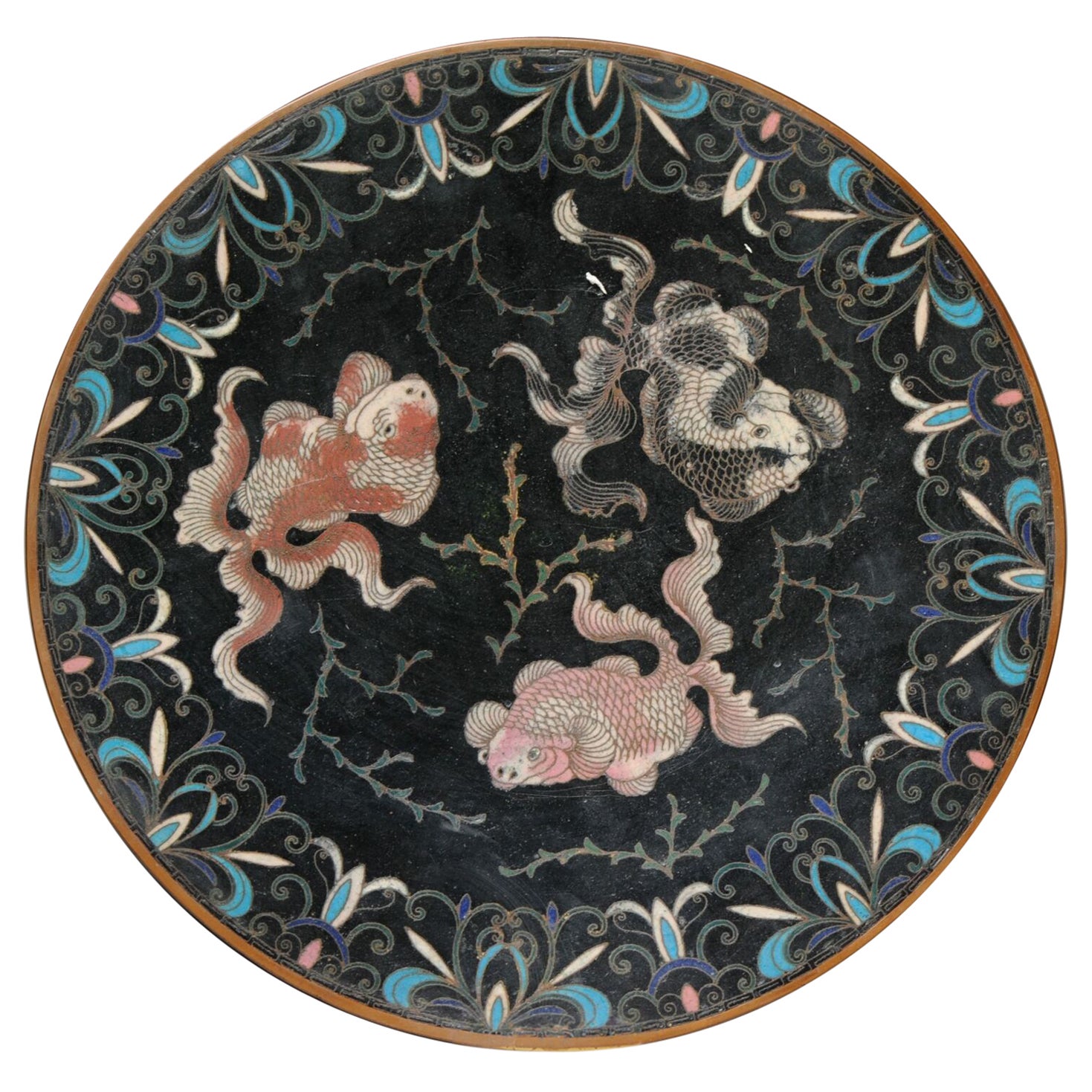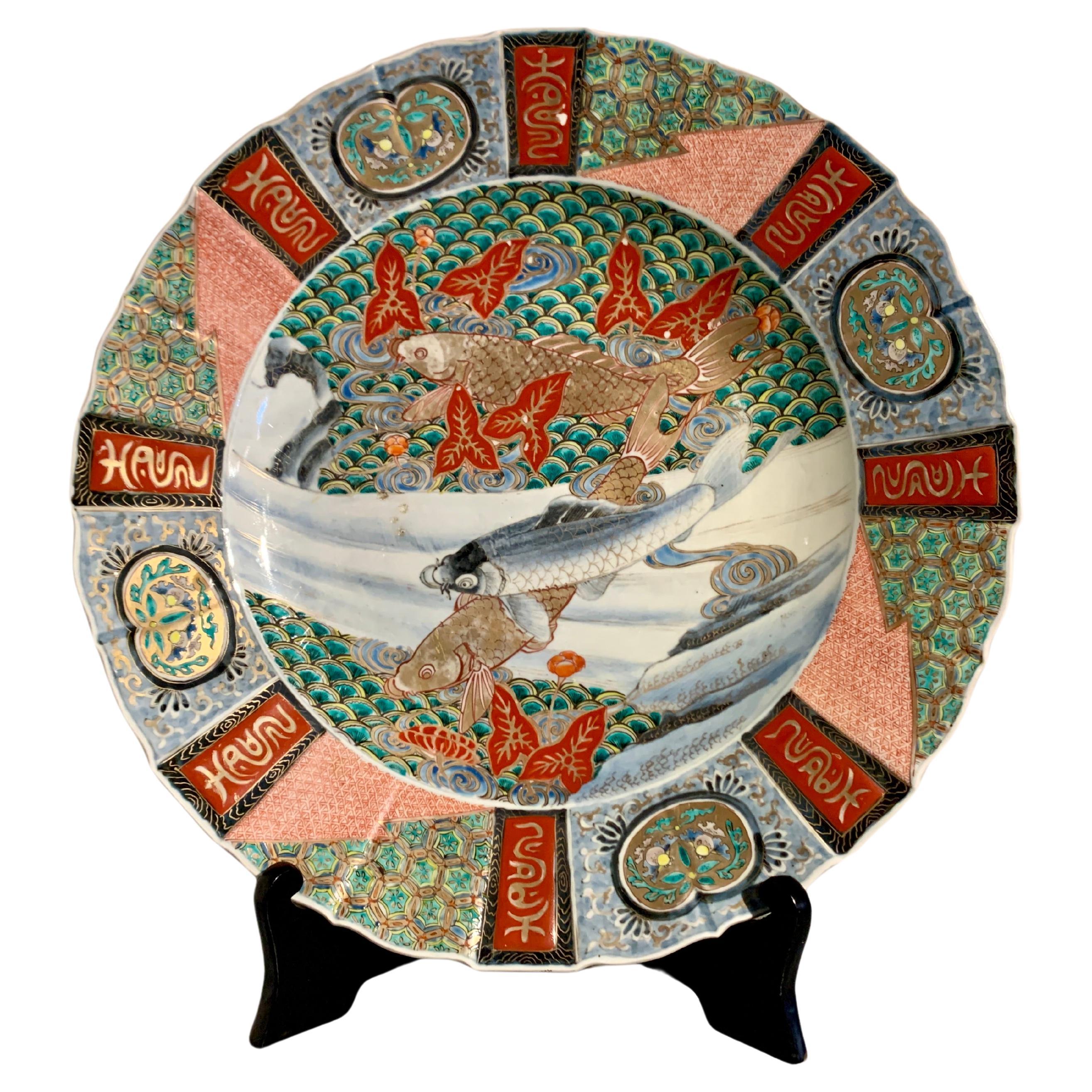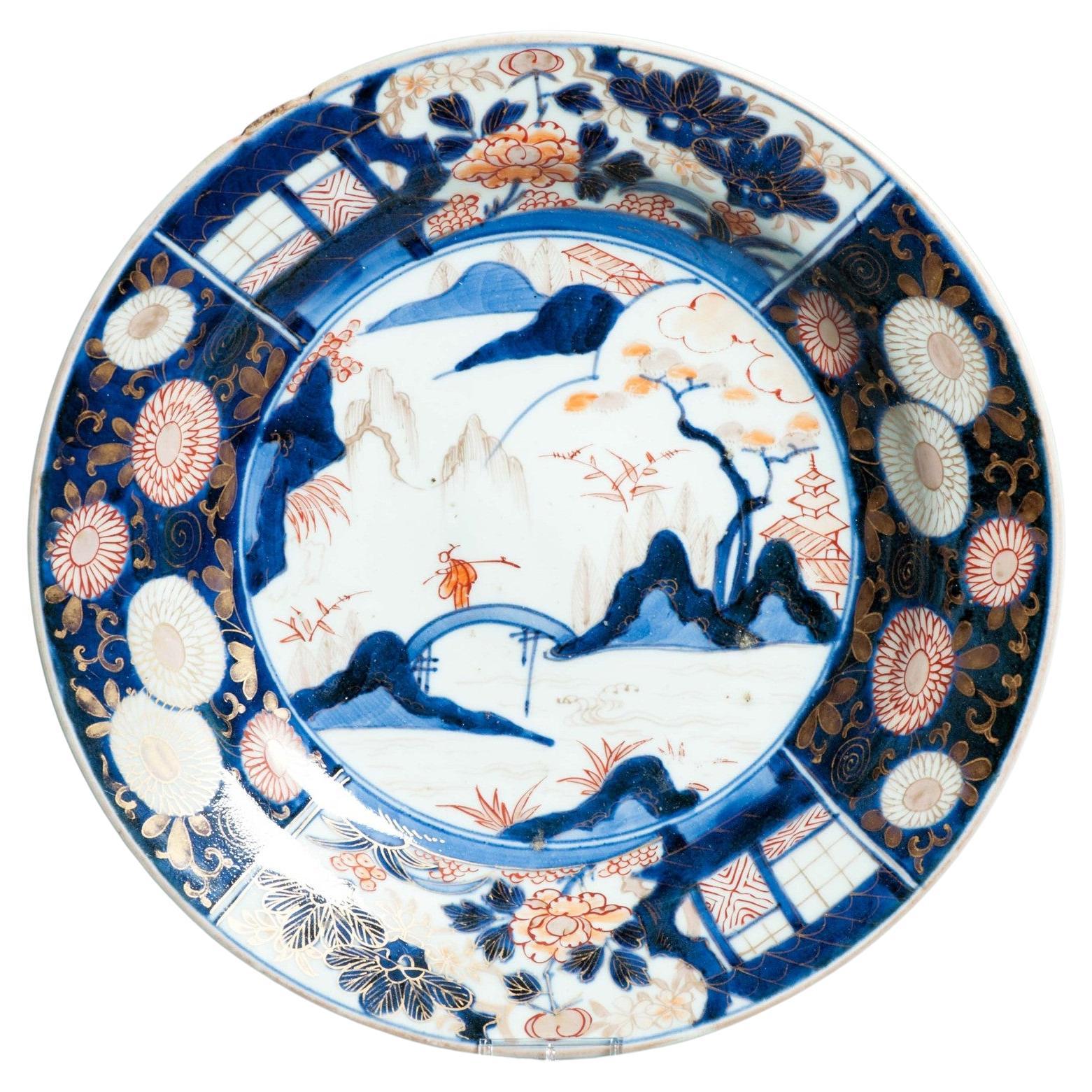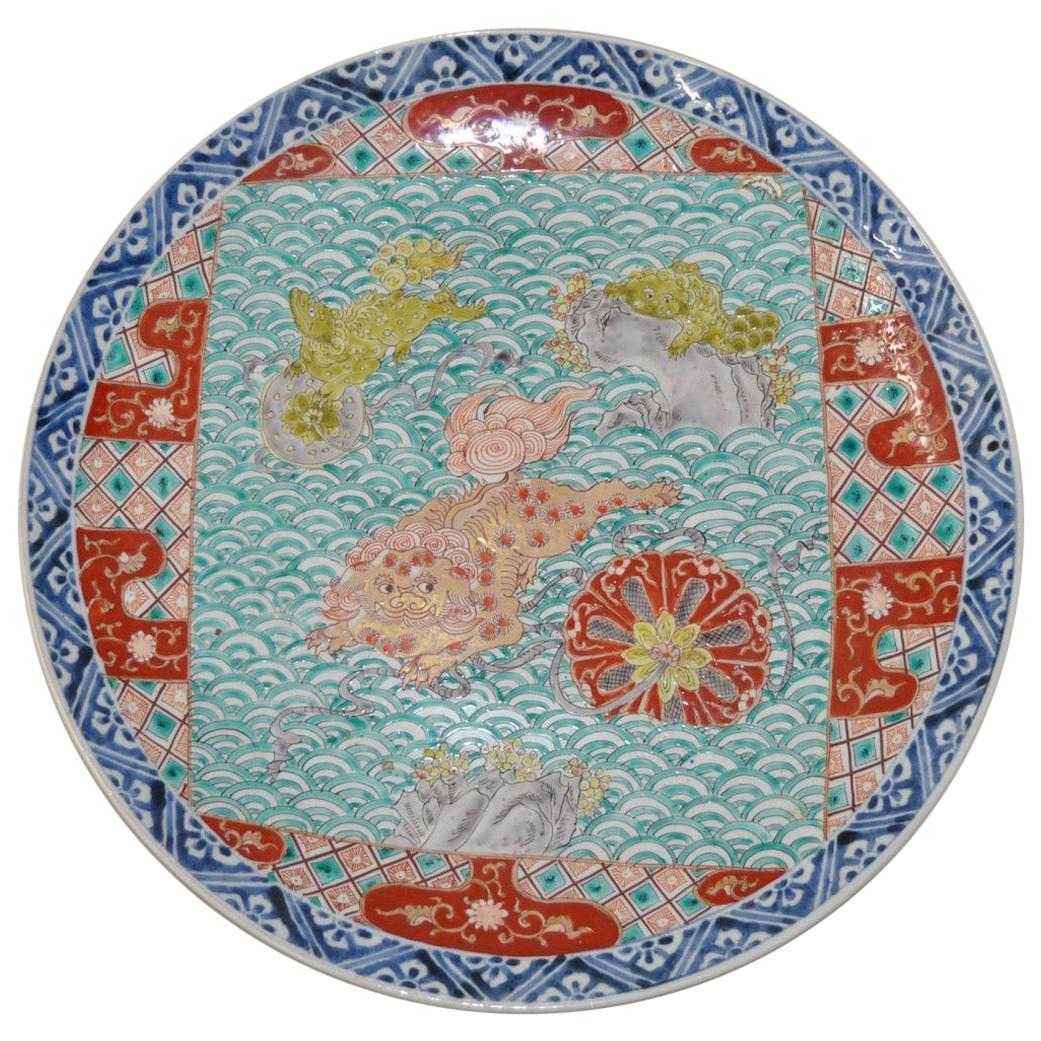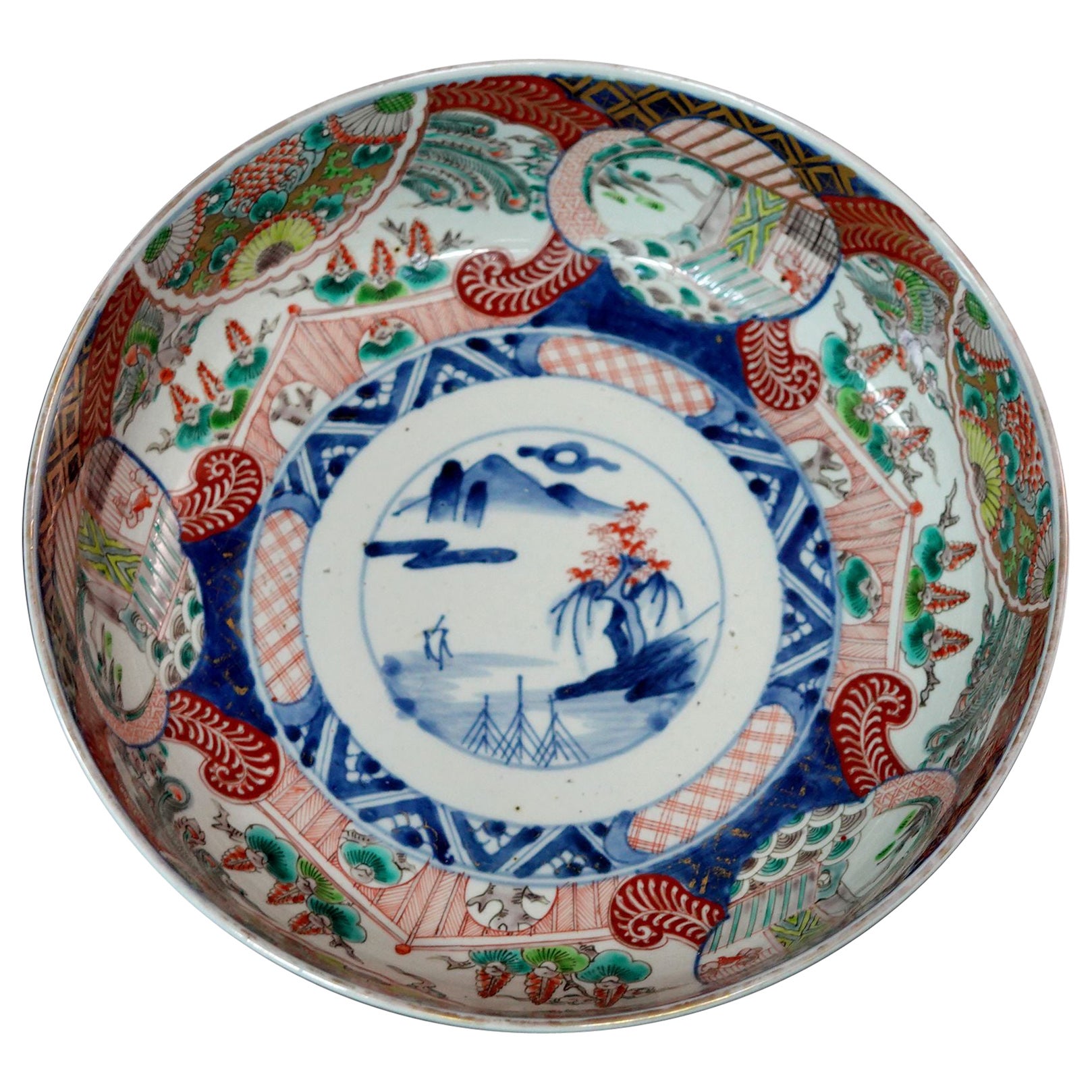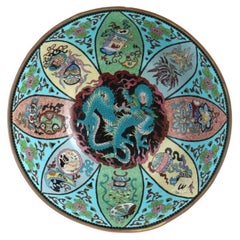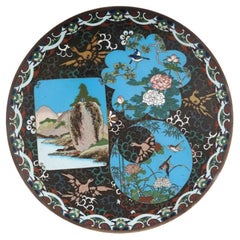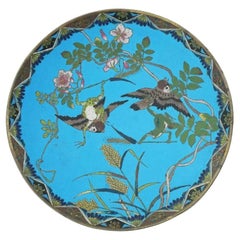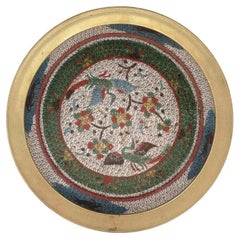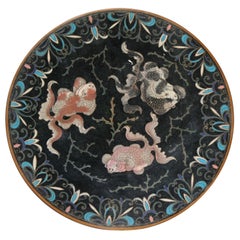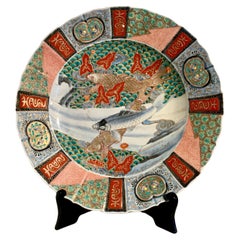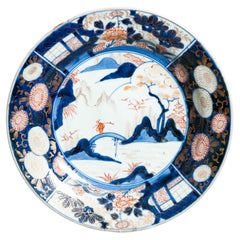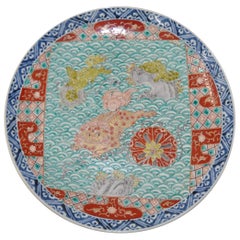Items Similar to 19th Century Japanese cloisonné Bowl with Fish Attributed to Hattori Tadasaburo
Video Loading
Want more images or videos?
Request additional images or videos from the seller
1 of 8
19th Century Japanese cloisonné Bowl with Fish Attributed to Hattori Tadasaburo
$5,000
£3,790.69
€4,369.66
CA$7,041.70
A$7,808.72
CHF 4,102.90
MX$95,409.31
NOK 51,332.93
SEK 48,184.72
DKK 32,620.37
About the Item
An antique Japanese copper plate with cloisonne enamel design. Late Meiji era, ca. 1910s. The piece depicts two carp fish among seaweed against the light blue background. Attributed to Hattori Tadasaburo, a Japanese cloisonné artist from Nagoya. Rare piece. Collectible Oriental Asian Tableware And Serveware, Decor.
OVERALL GOOD ANTIQUE CONDITION. SIGNS OF WEAR AND AGE. REFER TO PHOTOS.
D 9 3/4 IN. ALL MEASUREMENTS ARE APPROXIMATE.
- Dimensions:Height: 9.75 in (24.77 cm)Diameter: 9.75 in (24.77 cm)
- Style:Meiji (Of the Period)
- Materials and Techniques:
- Place of Origin:
- Period:
- Date of Manufacture:19th Century
- Condition:Wear consistent with age and use. Good antique condition. Signs of age and wear. Refer to photos.
- Seller Location:Long Island City, NY
- Reference Number:1stDibs: LU7386237467772
About the Seller
4.9
Platinum Seller
Premium sellers with a 4.7+ rating and 24-hour response times
1stDibs seller since 2022
101 sales on 1stDibs
Typical response time: <1 hour
- ShippingRetrieving quote...Shipping from: Long Island City, NY
- Return Policy
Authenticity Guarantee
In the unlikely event there’s an issue with an item’s authenticity, contact us within 1 year for a full refund. DetailsMoney-Back Guarantee
If your item is not as described, is damaged in transit, or does not arrive, contact us within 7 days for a full refund. Details24-Hour Cancellation
You have a 24-hour grace period in which to reconsider your purchase, with no questions asked.Vetted Professional Sellers
Our world-class sellers must adhere to strict standards for service and quality, maintaining the integrity of our listings.Price-Match Guarantee
If you find that a seller listed the same item for a lower price elsewhere, we’ll match it.Trusted Global Delivery
Our best-in-class carrier network provides specialized shipping options worldwide, including custom delivery.More From This Seller
View AllLarge Antique Meiji Period Japanese Cloisonne Bowl with Blue Dragon
Located in Long Island City, NY
A highly decorative antique Japanese Meiji period bowl decorated with cloisonne enamel patterns. The interior of the bowl is adorned with several panels with traditional benevolent s...
Category
Antique Late 19th Century Japanese Meiji Decorative Bowls
Materials
Enamel
$1,440 Sale Price
20% Off
Japanese Meiji Era Cloisonne Enamel Plate Charger
Located in Long Island City, NY
An antique Japanese, Meiji era, enamel over brass charger or plate. The plate is adorned with polychrome medallions depicting birds in chrysanthemum flowers, and a river mountain lan...
Category
Antique Mid-19th Century Japanese Meiji Tableware
Materials
Brass, Enamel
$1,000 Sale Price
33% Off
Antique Japanese Cloisonne Turquoise Enamel with Frogs Plate
Located in Long Island City, NY
An antique Japanese late Meiji era decorative enamel over copper plate or charger. The interior of the plate is adorned with a polychrome design of sparrows and frogs in blossoming f...
Category
Antique Late 19th Century Japanese Meiji Metalwork
Materials
Copper, Enamel
Large Chinese Cloisonne Enamel Over Bronze Charger
Located in Long Island City, NY
A large antique Chinese Meiji Era bronze and enamel charger. Circa: late 19th century to early 20th century. The charger is enameled with polychrome i...
Category
Antique Late 19th Century Chinese Meiji Tableware
Materials
Enamel, Bronze
Antique Japanese Cloisonne Enamel Pink Bowl With A Dragon
Located in Long Island City, NY
An antique Japanese enameled plate, featuring a central image of a dragon set against a pink ground. The edge is adorned with intricate multicolo...
Category
Antique 19th Century Japanese Metalwork
Materials
Enamel
18" Large Meiji Japanese Cloisonne Enamel Charger Flying Geese
Located in Long Island City, NY
An antique Japanese copper interior plate or charger with cloisonne enamel design. Meiji period
The central part of the plate is decorated with a picture of ducks by the river among...
Category
Antique Late 19th Century Japanese Tableware
Materials
Copper, Enamel
You May Also Like
Lovely Antique Chinese Bronze Cloisonne Charger Gold Fish Fishes, 19 Century
Located in Amsterdam, Noord Holland
Lovely and beautifully made piece. With a stunning gold fish scene.
Originally of the Catherina collection of Japanese bronzes and cloisonne that was partl...
Category
Antique 19th Century Japanese Meiji Decorative Dishes and Vide-Poche
Materials
Bronze
$5,417 Sale Price
20% Off
Large Japanese Imari Porcelain Charger with Koi, Meiji Period, late 19th century
Located in Austin, TX
A boldly decorated large Japanese Imari porcelain scalloped edge charger with koi fish, Meiji Period, late 19th century, Japan.
The large, shallow charger features a central design ...
Category
Antique 1890s Japanese Meiji Ceramics
Materials
Porcelain
A Lovely shaped 17C Edo period Rare Porcelain Dish Fisherman Enamel
Located in Amsterdam, Noord Holland
A great dish dating to most probably the second half of the 17th century, delicate painting of a fisherman walking the bridge of a river.
Condition
Good condition, chip to rim, tha...
Category
Antique 17th Century Edo Decorative Dishes and Vide-Poche
Materials
Porcelain
Antique Chinese Enameled Ceramic Platter, 19th Century
Located in San Francisco, CA
19th century Chinese enameled ceramic platter.
Beautifully hand painted with superb detail throughout.
Very good condition.
Dimensions 18" diameter x 2" high.
No chips. ...
Category
Antique Late 19th Century Chinese Chinese Export Ceramics
Materials
Ceramic
Japanese Antique a Large 19th Century Imari Bowl, Ric 054
Located in Norton, MA
Japanese antique a large 19th century Imari bowl with landscape, flowers, tree and garden sense design.
Category
Antique 19th Century Japanese Decorative Bowls
Materials
Porcelain
Imari Porcelain Bowl, Meiji Period, Japan, 19th c.
Located in West Palm Beach, FL
Hand decorated Japanese Meiji period porcelain bowl. The interior hand painted scene depicts three birds sitting on the limb of a tree. The reverse is hand painted with underglaze bl...
Category
Antique 1880s Japanese Japonisme Ceramics
Materials
Enamel
